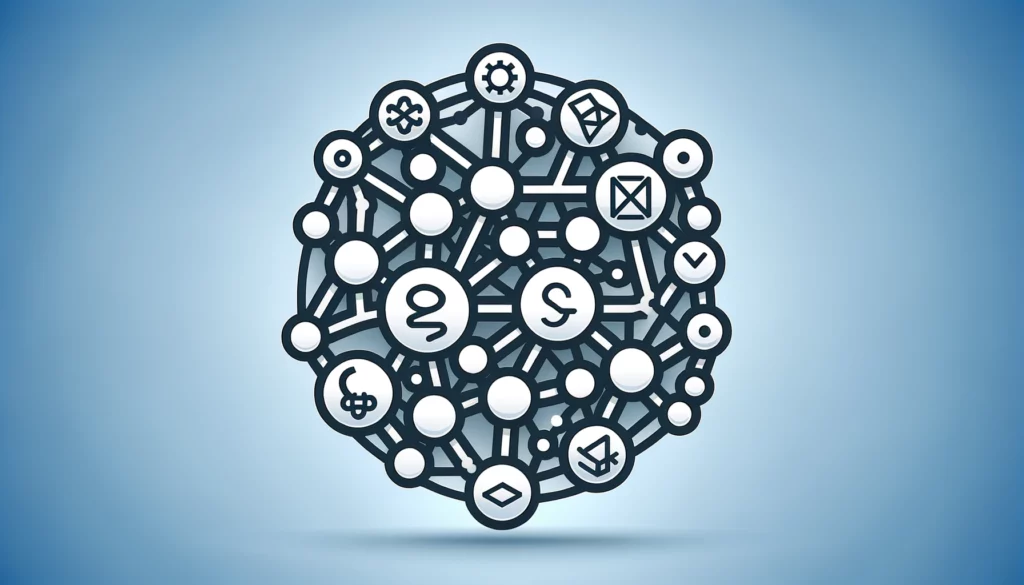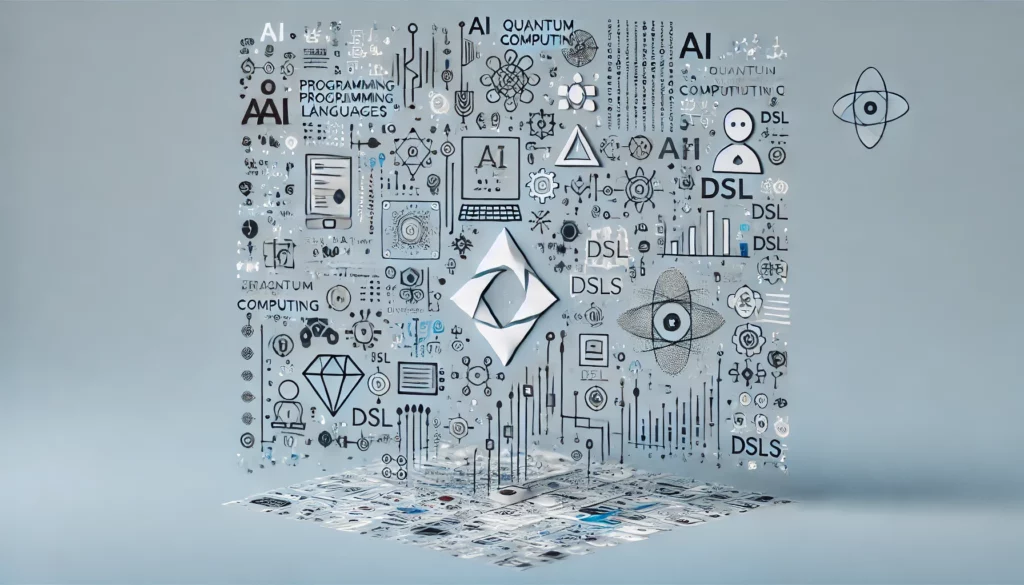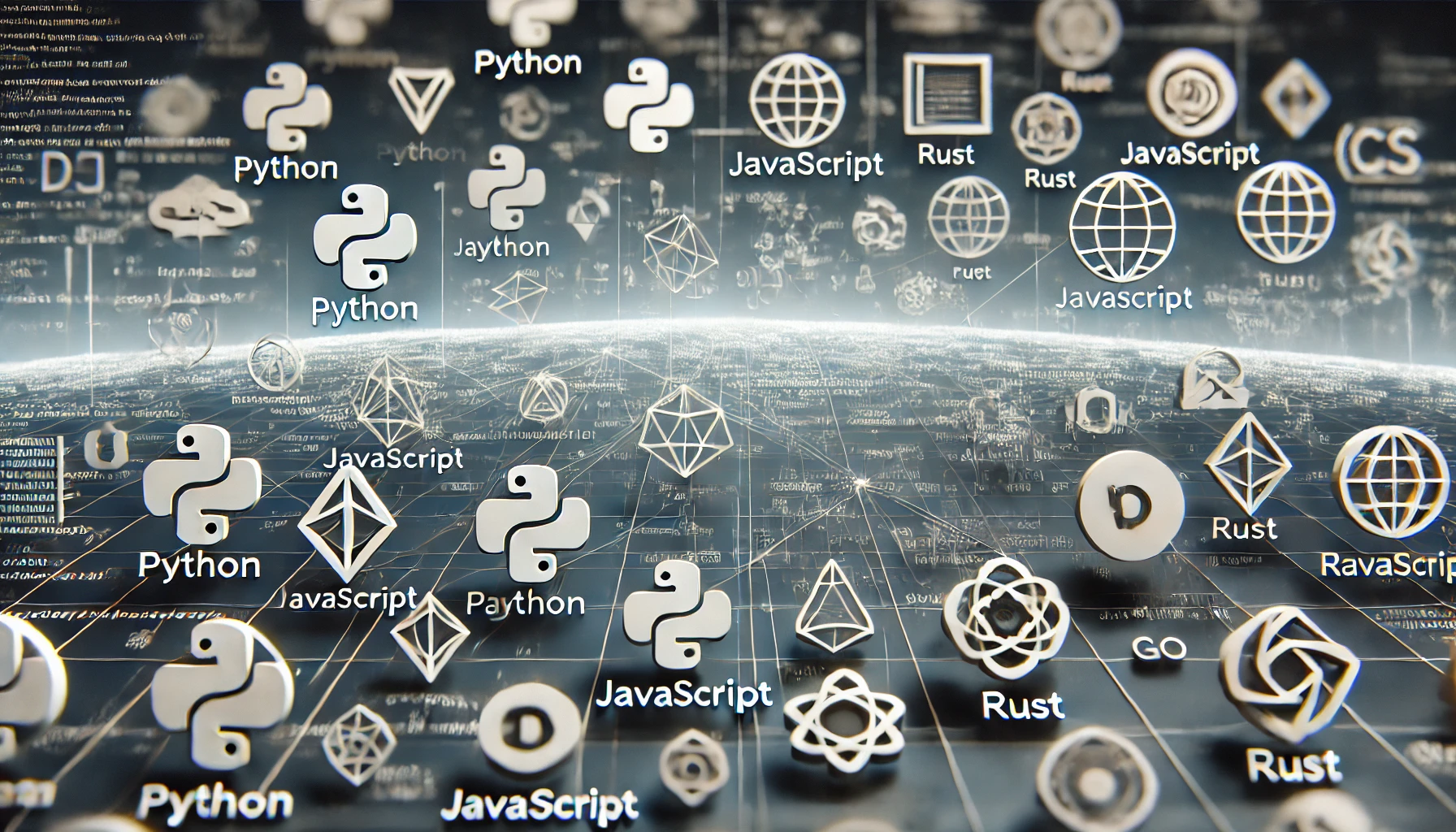Introduction
The evolution of programming languages is a fascinating journey that mirrors advancements in technology and shifts in developer needs. From the early days of Assembly and Fortran to the rise of Python and Rust, the landscape has continuously evolved to meet the demands of more complex and efficient computing. For instance, Assembly language, introduced in the 1940s, laid the groundwork for machine-level programming, enabling direct communication with computer hardware. Over time, higher-level languages like Fortran and COBOL emerged in the 1950s, making programming more accessible and efficient by abstracting hardware complexities (HackerRank) (Coursera). Today, we stand on the brink of a new era in programming language design. This article explores future directions, focusing on emerging trends, the integration of AI, and the innovations shaping next-generation programming languages. As we look to the future, understanding these dynamics is crucial for developers and researchers aiming to stay ahead in an ever-evolving tech landscape.
Evolution of Programming Languages
Early Developments:
The journey of programming languages began with low-level languages like Assembly, which required detailed hardware management. These early languages were crucial for the development of the first computers, allowing precise control over machine operations. With the advent of higher-level languages like Fortran and COBOL in the 1950s, programming became more accessible and efficient. Fortran, for instance, was designed for scientific and engineering calculations, while COBOL was tailored for business data processing (HackerRank) (Coursera). These languages introduced concepts such as loops, conditionals, and data structures, which are fundamental to modern programming. The transition from machine code to more abstract syntax enabled developers to write more complex programs with fewer errors, setting the stage for future advancements.
Modern Languages:
The emergence of object-oriented languages such as Java and C++ marked a significant shift in programming paradigms. Object-oriented programming (OOP) introduced concepts like classes and inheritance, which allowed developers to create reusable code modules. Java, with its platform independence and extensive libraries, became a staple for enterprise applications, Android development, and web services. C++, on the other hand, provided the efficiency of low-level programming with the added benefits of OOP (HackerRank) (Coursera). Scripting languages like Python and JavaScript further revolutionized the field by simplifying syntax and expanding capabilities. Python’s readability and versatility have made it a favorite for data science, AI, and web development. JavaScript, crucial for interactive web development, extends its capabilities with frameworks like React and Node.js (Code Institute Global) (Full Scale). These modern languages highlight the diverse requirements of different programming domains.
Current Trends:
Today, languages like Rust and Go are gaining popularity for their performance and safety features. Rust, known for its memory safety without a garbage collector, is particularly favored for system-level programming. Its strict compile-time checks and ownership model prevent many common programming errors, making it a reliable choice for developing secure and efficient software (Full Scale). Go, developed by Google, emphasizes simplicity and efficient concurrency handling, which makes it ideal for cloud-native applications and large-scale system software. Its garbage collection and built-in support for concurrent programming make it a powerful tool for developers aiming to build scalable applications quickly (HackerRank) (Code Institute Global). The rise of these languages reflects a broader trend towards improving performance and safety in software development.
Key Factors Influencing Future Language Design
Performance and Efficiency:
Performance remains a critical factor in language design. Modern applications demand high performance to handle large datasets, complex computations, and real-time processing. Languages like Rust are leading the way with their focus on memory safety and zero-cost abstractions, which enable developers to write high-performance code without sacrificing safety (Full Scale). Similarly, Go’s concurrency model addresses the need for efficient parallel processing, making it suitable for building scalable networked systems (HackerRank). As computational needs continue to grow, future programming languages will likely emphasize performance and efficiency even more, incorporating advanced optimization techniques and hardware-level integration.
Developer Productivity:
Enhancing developer productivity is a primary goal in modern language design. Integrated development environments (IDEs) and powerful frameworks play a significant role in this. Languages like Kotlin, with its concise syntax and full interoperability with Java, are designed to boost productivity while maintaining robust features (Full Scale). Tools that automate repetitive tasks, provide intelligent code suggestions, and facilitate debugging are becoming standard. These advancements help developers write code more quickly and with fewer errors. Future languages will likely continue this trend, integrating more sophisticated AI-driven tools to further enhance developer efficiency and reduce the cognitive load associated with coding (Coursera).
Safety and Security:
As software becomes more integral to critical systems, safety and security are paramount. Rust is a prime example, with its strict compile-time checks and ownership model that prevent many common programming errors, such as null pointer dereferencing and data races (Full Scale). These features make Rust an excellent choice for developing secure and reliable software, particularly in industries where safety is critical, such as aerospace, automotive, and healthcare (Full Scale). Future programming languages will likely continue to prioritize safety and security, incorporating robust mechanisms to prevent vulnerabilities and ensure code integrity.
Interoperability:
In a world where diverse systems need to communicate seamlessly, interoperability is crucial. Languages like TypeScript extend JavaScript, adding static types to reduce errors and improve integration with existing JavaScript codebases (Full Scale). Kotlin, designed to be fully interoperable with Java, allows developers to leverage existing Java libraries and frameworks while benefiting from modern language features. The ability to work seamlessly with other languages and systems is becoming increasingly important as software ecosystems grow more complex (Full Scale) (Coursera). Future languages will likely place a strong emphasis on interoperability, ensuring they can integrate smoothly with existing technologies and support polyglot programming environments.

Emerging Trends in Programming Language Design
Domain-Specific Languages (DSLs):
DSLs are designed for specific tasks, offering more efficiency and ease of use within their domains. Examples include SQL for database querying and R for statistical analysis (Code Institute Global). The growing interest in DSLs reflects the need for specialized tools in complex fields. These languages allow developers to express solutions in terms that are closer to the problem domain, reducing the cognitive-specific needs and improving productivity. By tailoring the language to a particular domain, DSLs can simplify complex tasks and make programming more intuitive. For example, SQL allows for efficient querying and management of relational databases, while R is highly effective for statistical computing and data analysis (Code Institute Global). The adoption of DSLs is likely to grow as industries recognize the benefits of specialized languages in improving efficiency and accuracy in specific fields. Future DSLs will continue to evolve, incorporating advanced features to handle increasingly complex domain-specific tasks.
Language Interoperability and Polyglot Programming:
The ability to use multiple languages within a single application is becoming increasingly important. Polyglot programming environments enable developers to leverage the strengths of different languages, fostering innovation and flexibility. For instance, a web application might use JavaScript for client-side interactions, Python for server-side logic, and SQL for database management (Code Institute Global). This approach allows developers to choose the best language for each task, improving overall application performance and maintainability. Interoperability ensures that these languages can work together seamlessly, facilitating the integration of new technologies into existing systems. As software development becomes more complex, the demand for interoperable and polyglot-friendly languages will continue to rise.
AI and Machine Learning Integration:
Languages like Python dominate AI and machine learning due to their simplicity and extensive libraries such as TensorFlow, PyTorch, and Scikit-learn. Python’s readability and ease of use make it ideal for developing complex AI models and algorithms (Code Institute Global) (Coursera). As AI continues to advance, programming languages will increasingly incorporate features to support AI development. This includes built-in support for parallel processing, enhanced data handling capabilities, and integration with machine learning frameworks. Future languages may also include specialized constructs for AI, enabling more efficient and intuitive development of AI applications. The integration of AI into programming languages will be a significant trend, driving the development of new tools and techniques to support AI research and development.
Quantum Computing:
Quantum programming languages such as Q# and Quipper are emerging as researchers explore the potential of quantum computing. These languages are designed to handle the complexities of quantum algorithms, which operate fundamentally differently from classical algorithms (Full Scale). Quantum computing has the potential to revolutionize fields such as cryptography, optimization, and complex system modeling. As quantum hardware becomes more accessible, the development of quantum programming languages will accelerate, providing developers with the tools needed to harness the power of quantum computing. Future quantum languages will focus on improving usability, integrating with classical systems, and providing robust frameworks for quantum algorithm development.
Future Directions and Predictions
Language Evolution:
Current languages will continue to evolve, incorporating new features and paradigms. For instance, the trend towards functional programming and immutability is likely to grow, influencing languages across the board (HackerRank) (Code Institute Global). Languages like Python and JavaScript are already adopting functional programming concepts, and this trend is expected to continue. Additionally, new paradigms such as reactive programming and declarative programming will shape the future of language design. These paradigms focus on improving code readability, maintainability, and scalability, addressing the challenges of modern software development.

Community and Ecosystem:
The role of developer communities and ecosystems cannot be overstated. A strong community contributes to the development of libraries, tools, and best practices, enhancing the overall language ecosystem. Open-source projects, in particular, benefit from active communities that drive innovation and support (HackerRank). The success of languages like Python and JavaScript is largely due to their vibrant communities and extensive ecosystems. Future programming languages will need to foster strong communities, providing resources and platforms for collaboration and knowledge sharing. The growth of developer ecosystems will continue to be a critical factor in the adoption and evolution of programming languages.
Education and Accessibility:
Making programming more accessible is essential for the future of technology. Simplifying language syntax and providing comprehensive educational resources will help bring more people into the field (Crossover Jobs). Initiatives to teach programming in schools, online courses, and coding bootcamps are making it easier for people of all backgrounds to learn to code. Future languages will likely focus on lowering the barrier to entry, with intuitive syntax, clear documentation, and supportive learning environments. By making programming more accessible, we can ensure a diverse and inclusive community of developers, driving innovation and progress.
Ethical and Social Considerations:
As programming languages shape the software that runs our world, ethical considerations become increasingly important. Language designers must consider the social impact of their work, promoting responsible and inclusive development practices (Coursera). This includes addressing issues such as bias in AI algorithms, data privacy, and the environmental impact of computing. Future programming languages will need to incorporate ethical guidelines and provide tools to help developers create socially responsible software. By focusing on ethical and social considerations, we can ensure that the advancements in programming language design benefit society as a whole.
Conclusion
The future of programming language design is rich with potential and challenges. By focusing on performance, productivity, safety, and interoperability, the next generation of languages will continue to push the boundaries of what is possible. Embracing these changes and preparing for the future will help developers stay ahead in an ever-evolving landscape. As we look forward, the integration of AI, quantum computing, and ethical considerations will shape the future of programming languages. By fostering strong communities and making programming more accessible, we can ensure that these advancements benefit everyone, driving innovation and progress in the tech industry.
